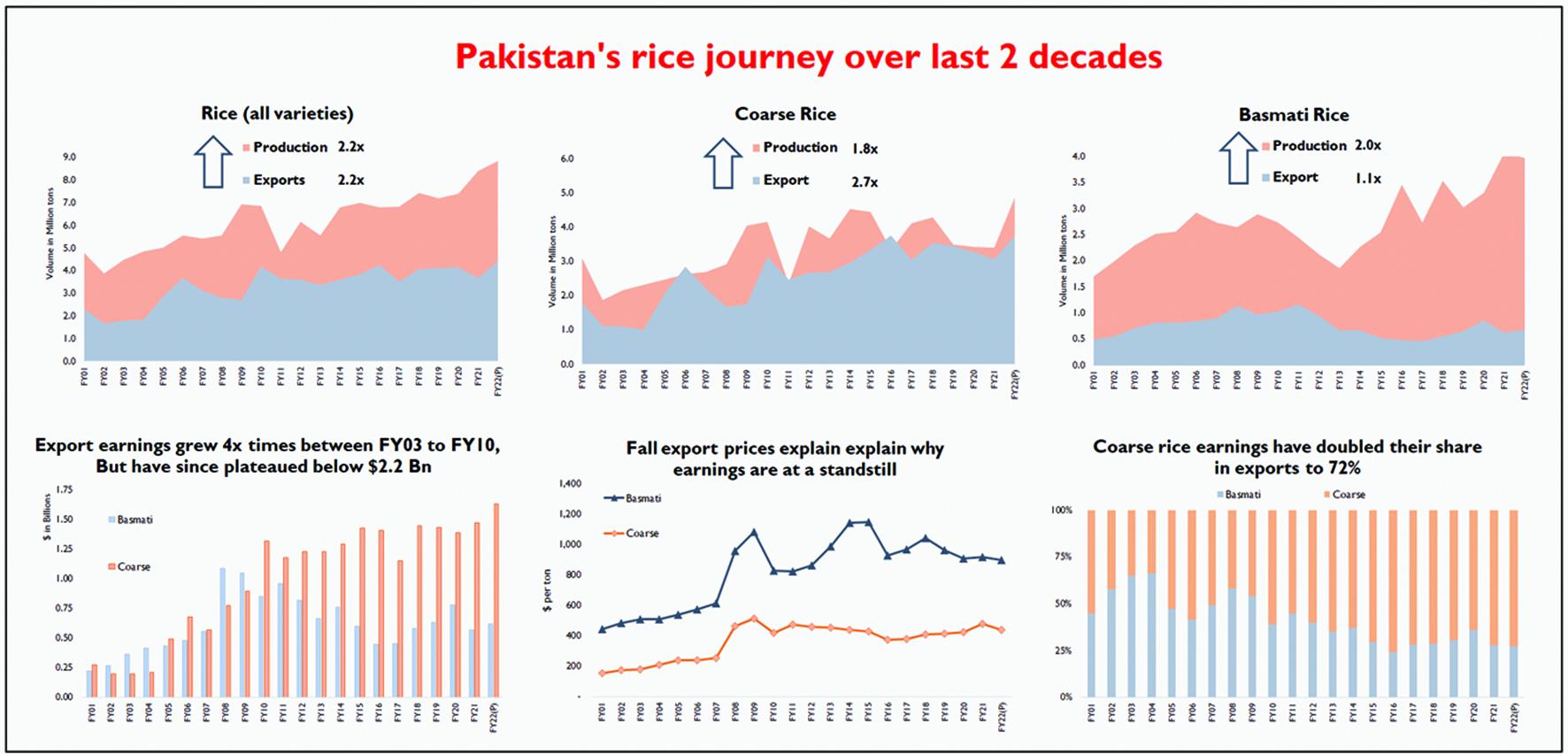As fears of Pakistan missing its wheat target grow, another grain is breaking new records. According to Federal Committee on Agriculture, rice production during kharif2021-2022 reached a record 8.84 million metric tons, up five percent over the previous season. Acreage under rice also touched a fresh peak at 3.5 million hectares, 10 percent greater than even the highest-ever acreage under cotton last witnessed nearly 20 years ago.
In fact, Pakistan’s rice crop has been in ascendancy over the past 20 years. Output has more than doubled, in line with exports that still constitute nearly half of total production. On first glance, it appears that the rise in acreage - 1.57 times - more than the rise in productivity – 1.27 times – accounts for the remarkable growth in output. However, this masks the extraordinary productivity gains achieved by hybrid rice during this period, whose output has grown 10 times against acreage which rose only five times. As a result, hybrid rice accounts for only 20 percent of area under rice, but over one-third of total production.
It is this little emphasized triumph of hybrid rice that has helped Pakistan double its export volume during the past two decades. Export volume of Pakistan’s flagship rice variety – basmati – has barely nudged ahead since FY03, even as its output has also doubled. Meanwhile, coarse rice exports (inclusive of both hybrid and IRRI varieties) have increased by 2.7 times. Coarse varieties are in fact mainly produced for export purposes, with no more than 10 – 25 percent consumed locally.

Which in turn explains the conundrum of Pakistan’s stagnant rice export earnings, which have failed to grow for over a decade. Although rice export volume is set to achieve fresh record of 4.4 million metric tons during the fiscal year ending June 2022, export earnings may yet clock in under $2.2 billion, barely breaching the record set in FY10, some 12 years ago. Despite a global commodity price spiral, basmati export earnings are expected to touch $630 million, 43 percent lower than record earnings against basmati export during FY08. That’s because the expensive basmati variety is primarily cultivated to cater to local market, with more 80 percent of output consumed locally.
Meanwhile, a slowdown in international prices of nearly all rice varieties has also kept export earnings in check. While basmati prices have also dwindled in recent years, they remain nearly two times that of coarse rice prices. Although Pakistan’s share in world basmati export market stands at just 20 percent and could very well be grown several times, a shortfall in production of other food cereals such as wheat means the country cannot afford to export a greater share of its basmati output. Thus, while coarse rice varieties traverse fresh peaks of both output and export, Pakistan rice export earnings may remain stuck at current levels for the foreseeable future.

























Comments
Comments are closed.